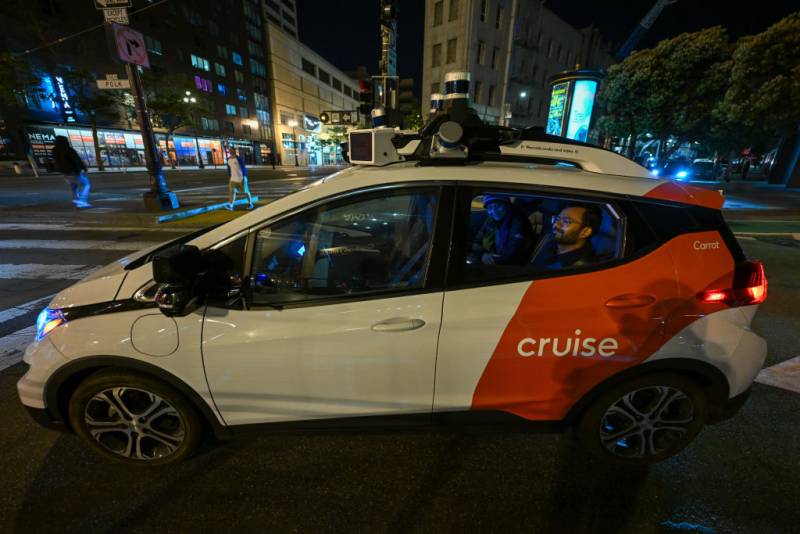Earlier this month, a Cruise robotaxi ran over a pedestrian who had been hit by another vehicle driven by a human. The pedestrian became pinned under a tire of the Cruise vehicle after it came to a stop. In a statement, Cruise said it was continuing to cooperate with state and federal regulators investigating the Oct. 2 accident — and that its engineers are working on a way for its robotaxis to improve their response “to this kind of extremely rare event.”
According to the fire department’s Luttropp, there are three main issues first responders are hoping to continue to work through with both Waymo and Cruise: reducing the incidents where AVs respond inappropriately or stop abruptly, which blocks traffic and first-responder vehicles; having a better system for first-responders to communicate with the company when an AV is stopped (“when minutes and seconds matter, these long telephone conversations, if we’re even able to reach a human, were cumbersome,” he said); and, as a last resort, having the ability for first-responders to move a stalled AV if other options fail. The last issue, he said, has been fixed but not yet implemented.
Earlier this month, the National Highway Traffic Safety Administration announced that it was also investigating Cruise’s autonomous vehicle division after receiving reports of incidents where vehicles may not have used proper caution around pedestrians in roadways, including crosswalks.
The NHTSA’s Office of Defects Investigation said it received two reports involving pedestrian injuries from Cruise vehicles. It also identified two additional incidents from videos posted to public websites, noting that the total number is unknown.
In December last year, the NHSTA opened a separate probe into reports of Cruise’s robotaxis stopping too quickly or unexpectedly, potentially stranding passengers. Three rear-end collisions reportedly occurred after Cruise AVs braked hard and kicked off the investigation.
According to an Oct. 20 letter that was made public Thursday, since beginning this probe, the NHSTA has received five other reports of Cruise AVs unexpectedly braking with no obstacles ahead. Each case involved AVs operating without human supervision and resulted in rear-end collisions.
“We welcome NHTSA’s questions related to our safety record and operations,” Cruise spokesperson Hannah Lindow said in a statement sent to The Associated Press on Friday. “We have cooperated with each of their requests to date as part of the ongoing investigation process and will continue doing so.”
Cruise has previously maintained that its record of driverless miles has outperformed comparable human drivers in terms of safety, notably crash rates.
Luttropp said he would hope Cruise would use this time to continue working on the technology and meeting with city agencies, such as the first responders, to work through issues — and that future forays into the space from other companies, as Apple has hinted at, would learn from this process.
“Myself, not being an MIT-trained engineer, was willing to accept it at face value that these vehicles would be superior to human drivers,” he said. “And the technology has great promise. In its adoption, it did not live up to that.
“As my chief would say, ‘it wasn’t ready for prime time yet.'”
KQED’s Oscar Palma contributed reporting to this article.

